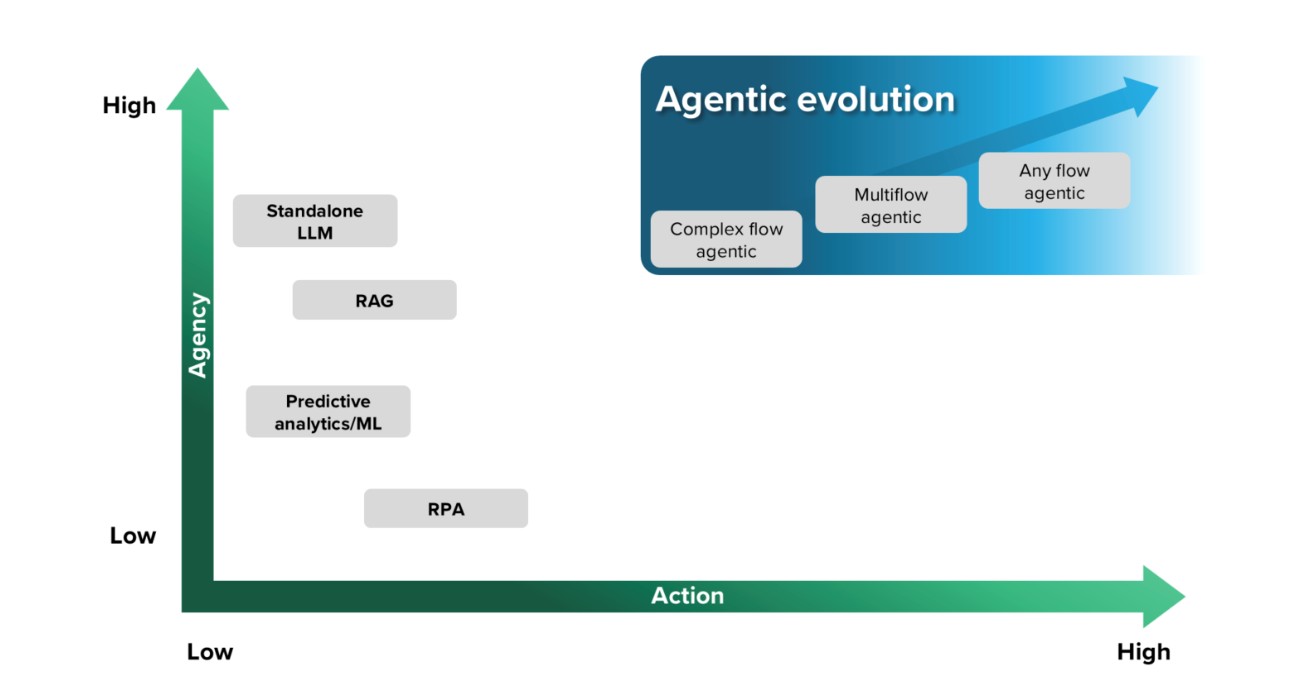Agentic AI
,
Artificial Intelligence & Machine Learning
,
Data Governance
Practical Guide to Architect, Govern, Scale AI Agents for Enterprise Transformation

Part 1 of this two-part feature on agentic artificial intelligence covered how the autonomous systems shift enterprises from reactive generative AI to autonomous, accountable systems. Part 2 provides a practical blueprint for architecting, governing and scaling agentic AI to deliver enterprisewide transformation.
See Also: AI Agents Demand Scalable Identity Security Frameworks
By 2025, nearly 75% of large enterprises will be running pilot projects with AI agents, but few expect to scale these capabilities into production. According to McKinsey’s CEO playbook, “unlocking the full potential of agentic AI requires more than plugging agents into existing workflows. It calls for reimagining those workflows from the ground up – with agents at the core.” The logic is simple. Pilots provide niche benefits, but, on the other hand, platformized agents generate compounding gains across business units.
ISG projects that by 2025, 30% of BFSI enterprise workflows will have agentic components but warns that only organizations with the right foundations in place will be able to capture the actual value. Those foundations include an enterprise data strategy, modular orchestration architecture, defined governance framework and workforce ready to collaborate with autonomous systems.
According to Gartner’s projections, 40% of agentic AI projects will be cancelled by 2027 if enterprises fail to address issues related to scope, governance and cost control. CIOs’ task is to turn isolated wins into a coordinated and resilient platform for agile execution.
Architecting for Autonomy
A successful deployment of agentic AI starts with a strong architecture, not just models. As Bain & Company states, “Disruption is mandatory; obsolescence is optional.” The goal of building this architecture should be to create a flexible, modular system where agents can be developed, deployed, monitored and replaced without destabilizing the entire tech stack. Key components of this architecture should include:
- Orchestration layer: Manages multi-agent workflows, role assignments and inter-agent communication. This is where a supervisor agent, such as J.P. Morgan’s “Ask David,” can route tasks to specialized sub-agents, maintain context and handle human escalations.
- API integration fabric: Secure connectors to enterprise apps, knowledge bases and third-party services. Capgemini emphasizes that “agents are only as strong as the tools they can safely use.”
- Memory and state management: Persistent, secure storage of agent context for long-running or recurring tasks, with strict retention and compliance controls.
- Evaluation and observability stack: Continuous monitoring of accuracy, latency, cost and compliance, drawing on CB Insights’ advice to embed reliability into the agent chain. Human-in-the-loop oversight and solid data infrastructure management can help address these concerns.
McKinsey emphasized the importance of starting with a lighthouse transformation: initiate a few high-impact, agentic AI-driven workflow transformations in core business areas. Simultaneously, lay the groundwork for an agentic AI technology foundation by investing in key enablers, including technology infrastructure, data quality, governance frameworks and workforce readiness.
Governing the Agents
Governance should not be an afterthought; it should a prerequisite for scaling. Forrester describes agentic AI as “the next competitive frontier.” “Enterprises must build the right technology and infrastructure for agentic AI, including robust data pipelines, AI-driven insights, automation frameworks and real-time decision engines,” said Rowan Curran, principal analyst at Forrester.

A practical governance framework should define:
- Autonomy boundaries: What decisions can the agent make independently? When must it escalate to a human?
- Risk tiers: Differentiate between agents performing low-risk internal optimizations and those interacting directly with customers or critical infrastructure;
- Auditability: Ensure all actions, inputs and outputs are logged and traceable;
- Privacy and compliance: Particularly critical for agents handling regulated data in sectors such as healthcare and finance.
Gartner identifies “agent sprawl” as a leading cause of project failure, and to prevent this, technology leaders should centralize agent provisioning, monitoring and retirement through a dedicated “AgentOps” function, similar to DevOps or MLOps.
McKinsey advocates for a people aspect. That means governance must include workforce adaptation, with transparent communication about the role of agents and updated human responsibilities. The fear of replacement is best addressed through clarity of collaboration.
Executing for Impact
Execution is where architecture and governance translate into business value. An ideal execution playbook for technology leaders should:
- Pick high-value, measurable workflows: Enterprises should avoid diffusion pilots. They should select processes with clear KPIs, such as mean time to recovery in IT operations, case resolution time in customer support or time-to-insight in research;
- Integrate deeply, not superficially: Agents should plug directly into enterprise systems to take action, not just provide suggestions. J.P. Morgan’s Ask David demonstrates the productivity gains when agents can directly query and synthesize across multiple proprietary data sources;
- Iterate with human-in-the-loop: Use staged autonomy, starting with suggestion mode, moving to partial automation and only then to complete execution in low-risk contexts;
- Measure relentlessly: Monitor operational KPIs, cost per task, error rates and escalation frequency. Use this data to tune autonomy levels and workflows;
- Scale laterally: Once a lighthouse use case is proven, replicate the architecture and governance model across adjacent workflows.
Mitigating Risks While Scaling
Scaling agents amplifies both benefits and risks. CB Insights warns that multi-agent systems raise the likelihood of compounded errors. Gartner’s data also indicates that projects fail not because agents underperform but because costs escalate and governance takes a back seat.
Practical mitigations include:
- Cost controls: Set quotas, limit rates and use cost-per-action dashboards;
- Drift detection: Monitor shifts in agent behavior or accuracy as models and APIs evolve;
- Fallback protocols: Ensure predefined safe modes or human interventions when confidence drops below set thresholds;
- Vendor diversification: Avoid reliance on a single provider by distributing essential agent capabilities among multiple vendors.
Bain & Company’s perspective is worth following here: “In the agentic era, resilience is as much about vendor strategy as it is about technical redundancy.”
For laggards, the situation is different: fragmented pilots, lack of shared infrastructure, increasing costs and talent loss as AI-savvy staff move to more advanced organizations. According to McKinsey, “The cost of inaction is no longer measured in missed efficiency; it is measured in competitive irrelevance.”
